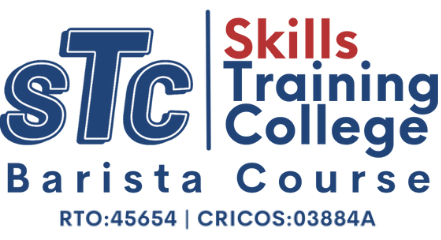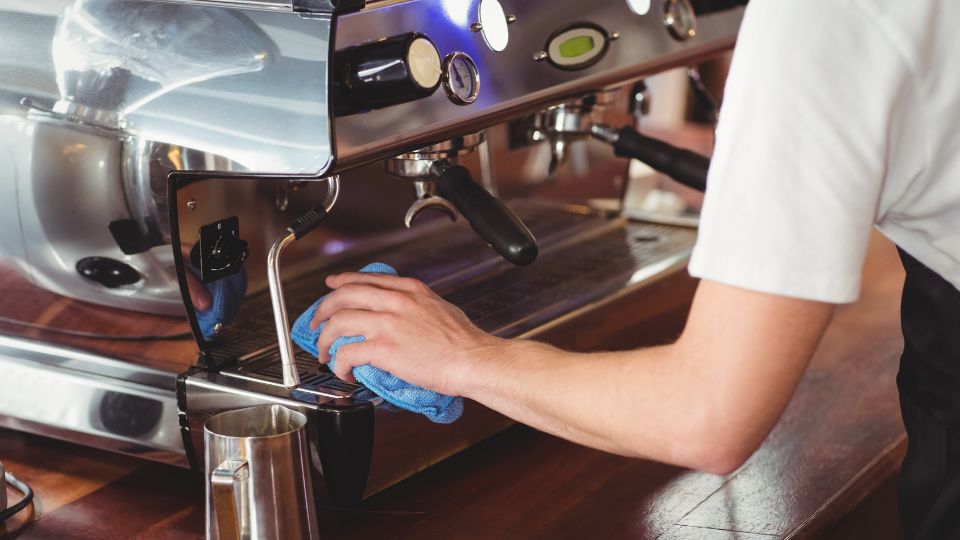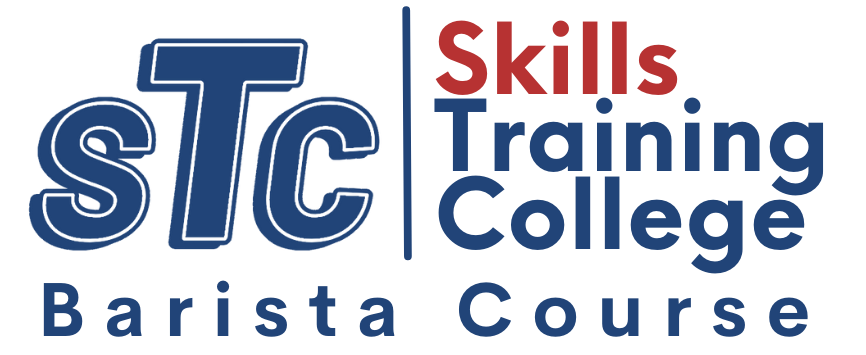You went to the expense of buying your own barista-style coffee machine. It looks amazing, it worked perfectly out of the box, and you love everything about it! Now you have to clean it, and the instructions are vague and unhelpful; and what does that button do? How do I get that cover off to clean the tray? How can I clean the grinder? What stops bacteria from building up in my water supply? There are so many questions about cleaning a coffee machine that we decided to write an article about cleaning barista-style coffee machines.
Consider taking a basic Barista Course with Skills Training College to get the inside scoop on all the industry secrets and learn how to make exceptional coffee and clean your machine with practical hands-on experience on the course.
What Tools Would You Need For Cleaning A Coffee Machine
Students taking a Barista course with Skills Training College learn that the art of making great coffee is more than selecting and grinding coffee beans and frothing a range of milk products. Cleanliness is the key to consistently extracting the best flavours from the coffee and producing excellent results. See the requirements of a barista job to be aware of what employers expect from a barista.
Coffee is a rather oily product and leaves a sticky residue on all parts. Coffee machines require several types of cleaning and multiple types across the day of service. Particular attention must be paid to the wiping of group handles, group heads, and steamer pipes after each use and between clients. The bean hopper also requires occasional cleaning, and the frequency will be determined by usage.
Coffee needs to be at its freshest to taste amazing. Stale coffee left in your grinder or machine will affect the flavour of your fresh coffee, and this will taint every cup of coffee served. Bad coffee loses clients and business. People expect every cup of coffee they purchase to be the best cup of coffee there is to be consumed. Keeping all parts of your coffee machine clean and well-maintained is vital to making good coffee and is part of the OSH WorkSafe practice. Coffee machines are expensive equipment that requires regular cleaning and maintenance to increase their longevity, perform reliably, and guarantee delicious quality coffee with every cup produced. Daily cleaning of commercial machines is essential. Home machines can be cleaned weekly or monthly, depending on how often they are used.
Tools To Clean Your Machine
Without frequent cleaning, your equipment will degrade from a build-up of oil and mineral residues coffee produces when crushed. To enable you to clean more effectively and efficiently, the right tools are needed for the job:
- Soft lint-free cloths
- Group head brush
- Blind Filter for Group Handle
- Espresso machine cleaner (backflush detergent)
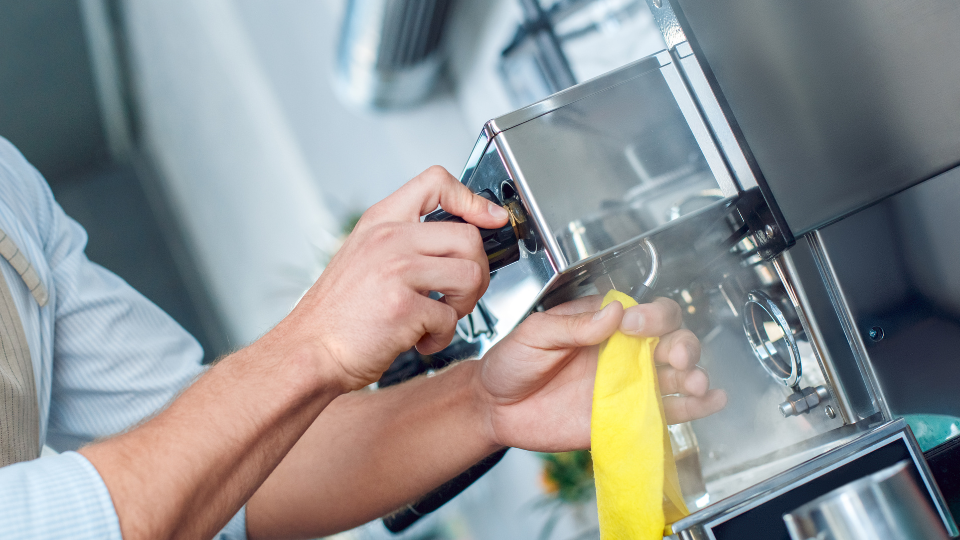
Parts To Be Cleaned
Group Handles And Filter Basket
A daily task to minimise the oil build-up these two areas are prone to involves using clean water to rinse the group handle and filter basket. You can use diluted methylated spirits in the water, or as a spray to wipe down the machine’s externals for a bacteria-free finish on all parts that do not come into direct contact with the coffee or milk.
Soak the group handle in cleaning powder if there is a lot of oil build-up. Remove the basket from the group handle, then in a container, dissolve a teaspoon of the powder in hot water and soak both parts in the solution for 15-30 minutes. The use of a scouring pad should remove the product build-up.
General Instructions (Check your machine manual)
- Remove the portafilters from the group heads.
- Brush the group heads with a cleaning brush to remove the used coffee particles stuck in the group head.
- Replace the portafilter’s brewing baskets with blind baskets.
- Dose one teaspoon of espresso machine cleaning product into the blind baskets.
- Insert the portafilters into the group heads.
- Put the water supply on as you would when making espresso, and keep it on for 10 seconds.
- Wait 3 seconds and put the water supply on again.
- Continue doing this four times (4 x 10 sec with 3sec pauses).
- Remove the portafilters from the group heads and flush the cleaning powder away with water.
- Brush the group heads again to ensure no coffee particles are left.
- Insert the rinsed portafilters into the group heads again.
- Repeat the 4 x 10 sec procedure.
- Remove the portafilters from the group heads and run some water through the group heads.
- After that, you are done with the machine cleaning process
Back-flushing
Back-flushing works to remove old coffee oils that build up by flushing water and cleaning solution through the machine. Use a blind filter in the group head to backflush your coffee machine’s internal system according to the manufacturer’s instructions for your specific machine. After completing this process, rinsing with clean water is recommended to remove any remaining chemical residue that might taint the water or coffee in the cups produced after the cleaning.
FYI: back-flushing is done to maintain the 3-way solenoid valve in the machine that controls the water flow. If this valve becomes clogged or stuck, it cannot be fully opened or close, meaning you cannot make proper espresso or get the right amount of water to activate the ground coffee beans.
Shower Screen
Shower screens can be more of a hindrance than a help, and that is why some cafes remove the shower screen. If your machine has a shower screen, remove the screws holding it in place and soak them and the screen in the coffee machine cleaner. Wipe the group head clean with a damp, lint-free cloth, rinse the shower screen, wipe dry, and reinstall.
Removing the shower screen on machines not held in place with a screw is not advisable. Prying the group seal off will inevitably destroy the seal and damage the machine in the process. Use the lint-free cloth and solution to wipe the screen clean on all faces.
Steam Wands
Every time you steam milk, you must ensure you wipe down the steam wand with a damp cloth and purge the inside of the wand by opening the steam tap to let a small amount of steam out into a cup. This prevents milk products from drying on the inside of the steam nozzle and becoming a health risk or source of bacteria that may cause health-related issues.
Dried milk can be removed from the inside of the cylinder and the nozzle heads by unscrewing the tip of each wand and using a pipe brush and metal paper clips to open up the nozzles and remove the detritus.
Milk Jugs
Milk jugs should not be overlooked as part of the coffee machine cleaning process. They are easily cleaned using a jug/glass rinse device, or manually with hot clean water. It is vital to thoroughly rinse any item that contacts milk after each use. Milk has a residue film that clings to surfaces. Warm milk into cold milk will make the cold milk state off or alter it to become unpleasant. If the steam wand or milk jugs were not cleaned properly, you would likely have had a coffee that tasted or smelt slightly off.
Drip Tray
Coffee grounds and liquids fall into the drip tray. Drip trays can fill quickly and require regular cleaning and emptying. They detach as per the unit instructions to be emptied, washed, dried, and reattached, ready for use. Drip trays must be cleaned and dried at the end of each day to ensure they are clean and ready for use with the start of the next day’s trade. Never let a drip tray or dirty steam wand sit overnight, as bacteria will build up and health issues will result.
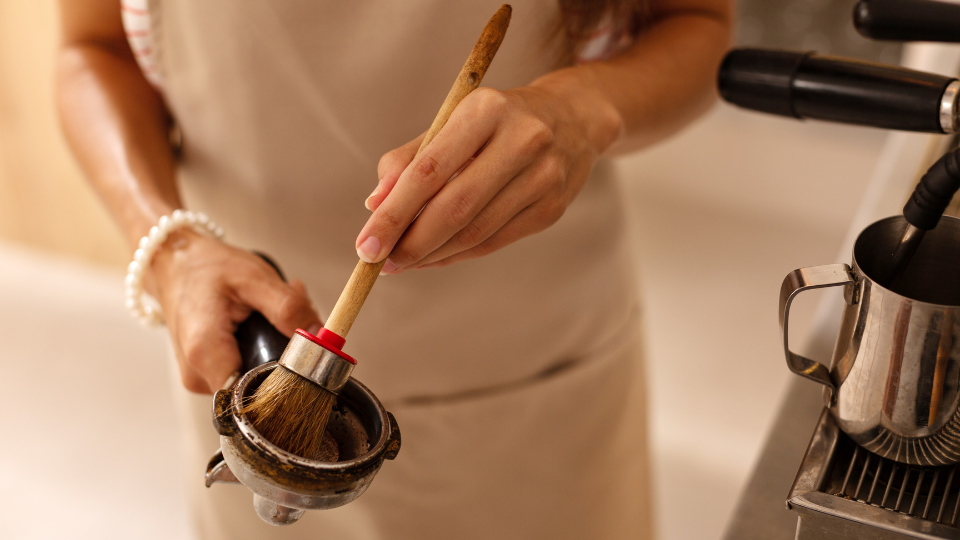
How Often Should You Clean Your Coffee Machine
Commercial machines need to be cleaned daily, and many coffee houses or cafés may require several cleanses on the same day. Home units that are only used once to twice a day only require a weekly deep clean with daily wand and basket cleaning.
Brushes To Clean A Coffee Machine
A range of brushes exists to get into the tiny crevices and clean out pipes, wands, and spouts. Most industrial coffee machines come with all the cleaning tools the machine requires. Replacement products can be purchased from the supplier or via websites like Amazon or eBay.
Cleaning Tablets For Coffee Machines
Coffee machine suppliers tend to sell specific products with their coffee machines and will try to keep the monopoly on cleaning supplies as the client always requires them. As with any medium, alternative products that do exactly the same thing for a fraction of the price a retailer charges can be purchased online or via a host of stores and even some supermarkets. There is no difference in the product’s quality, only the product’s packaging, and branding. Some machines take a tablet dissolved in water; others use a powder that also dissolves in water. The type of machine and preference will be the determining factors as to which product is used.
Coffee Machine Cleaning Powder
Cleaning powered tends to be slightly messier than using a compressed brick, disc, or tablet, depending on what the manufacturer chooses to call their product. Powders are cheaper for that reason and typically tend to provide better value for money at the sake of making more of a mess.
Most coffee machines will take both; however, you should always refer to the manufacturing instructions before using any products. Using the wrong product in the machine can cause it to break down or damage it to the point it needs to be replaced. That is a costly expense easily avoided by keeping the user manual and instructions within easy reach for quick access when required.
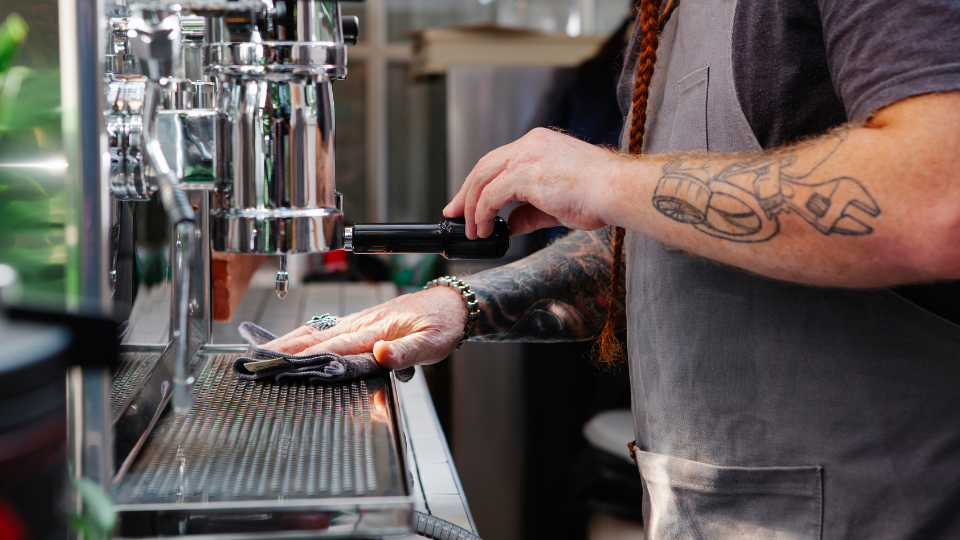
How To Clean Stainless Steel Coffee Machines And Jugs
There are several ways to clean stainless steel. The easiest is to use the Magic Eraser products. They remove all coffee and tea stains like magic. If you prefer to work harder for the same result, you can try to remove coffee stains with baking soda and hydrogen peroxide. To get the toughest stains off your coffee carafes, combine the two components, then use a sponge or scrub pad and some elbow grease.
A quick scan of the internet will provide you with a host of products that claim to remove all the stains in existence, but nothing beats natural products.
Try this Google suggestion to remove the tannin stains:
- Put a handful of ice into your stained stainless-steel coffee/tea container.
- Add ½ cup of white vinegar to the metal coffee pot.
- Add ⅛ cup of table salt into the mix.
- Swirl the stainless-steel container around until the ice melts or the stain disappears.
- Rinse the pot clean and dry, and then repeat the process to ensure you have removed all of the residue salt and vinegar and the container is dry, stain-free, and ready for use.
While you are here why not check out some of our other related Barista articles that might give you a better understanding of all thing’s barista. What is a Barista style coffee will give you an idea of different coffee styles that exist.
